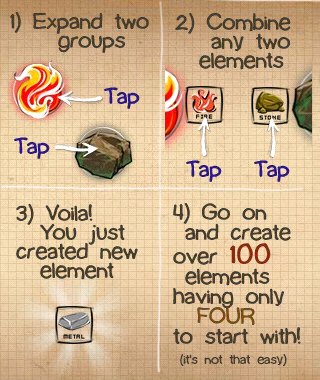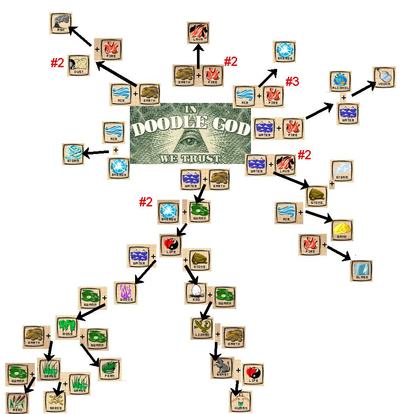Complexities You Can Count On
 Sunday, January 9, 2011 at 8:45PM
Sunday, January 9, 2011 at 8:45PM Recently, I've talked about complexities quite a lot. I've explained how they make games unique, but they also stress knowledge skills. Too many complexities can throw off the balance of the skill spectrum while slowing down the rate the player can progress. Complexities create nuance, and they're orthogonal to gameplay depth. Our minds can only process so many "bits" of game data/complexities at a time. And when we're trying to store information into our LTM (long term memory) we have to compress or code it. While coding information our overall mental capabilities drop. Because we have such limited STM (short term memory), analyze, and code/decode abilities, games more complex than Pong become increasingly difficult to manage.
Complexities (game rules) are in every line of gameplay code, but what does this mean exactly? Mario's JUMP mechanic seems simple enough, but it's full of complexities. Aside from the horizontal/vertical speed, acceleration complexities, and maximum speed limitations, there are squashing enemy, bouncing off of bricks, breaking bricks, JUMPing off of jump stands, JUMPing against solid objects, and DUCK+JUMPing complexities (additional rules/parameters). So does this mean that Mario's JUMP is enough to overload a new player? Does this mean the mechanic is too complex? Of course not.
Not all complexities are weighted equally. The arc, speed, and feel of Mario's JUMP is more important to learn than complexities like how Mario JUMPs of of jump pads. Furthermore, the more intuitive complexities are, the more we can relate to the game system with learned experiences as opposed to learning new arbitrary interactions.
The better we understand how we learn the smarter we can play and design video games. But what does it mean to be smart? What does it mean to learn quickly? Effectively? I started to investigate these ideas in my "From Unintuitive to Eureka" series. In part 5, I logged a detailed play through of the puzzle game 3D Logic. The idea was great, but the game was too complex. So we're trying again with a game that's much simpler.

Behold, doodle god! (don't play it quite yet). This indie flash game has extremely simple gameplay. Select two squares to create new elements. Elements are automatically organized into 1 of 14 groups. The more elements you create, the more you have to work with. A pair may create more than one product. Essentially, there's a fixed amount of possible elements (115) that you can create.

This game starts with a handful of groups and elements and thus very few possible combinations. But the shear number of possible combinations grows as you progress. To manage, we suss out the game logic to help narrow our trial and error attempts. Some combinations are scientific, some are thematically logical, others are creative puns, and some will make you question the game logic. Here's where things get interesting.
According to a scientist from the radio lab podcast on limits we, humans, don't have the capacity to understand very large numbers. Likewise, we have trouble understanding the microscopic processes of cellular activity even with the aid of super "Eureka" computers because there are so many dynamic, lightening fast, biochemical interactions on the cellular level. So the shear number of factors/elements in a system can be the difference between understanding and nothing.
With a game like doodle god players can smoothly move from an experience with manageable complexities to an overwhelming, unintuitive amount. You start off with 4 elements and 10 possible pairs. 5 gives you 15. 10 gives you 55 and so on. If you were trying to find the 115th combination blindly, you'd have 6,555 pairs to consider. Certainly somewhere around 100 possible combinations, it becomes very difficult to keep track of your progress in your head. Even at your best, you'll have to divide your brain power between finding new pairs and storing your old attempts.
What I just described is a simplified example. In actuality, figuring out all the possible combinations in doodle god is more like uncovering a branching tree rather than a spread sheet. If you're human, you will get stuck at some point playing this game. Trial and error is a big part of the experience, which naturally means your self motivated, branching, experimentation will lead you astray. In fact, I bet you'll start repeating known combinations at around 15, 25, 50, and 80 found elements (assuming you get that far). You will also either get distracted by new branching possibilities or forget which possible branches to try.
The beauty of this experiment is that you can feel the effects that increasing complexities have on the gameplay and your mind. Since each new element adds one more bit of complexity and many additional possible combinations to the gameplay, you can get a feel for the individual impact each complexity has. And when things get out of your control, you can practically count the limitations of your mind.
Your Opportunity
If you decide to play doodle god and you want to get the most out of this opportunity you'll need a friend to assist you. As you play a new game of doodle god for 30 minutes (preferably for the first time) have your friend discretely draw a tree of your progress. You might need to play a bit slowly so your friend has time to write everything down. Every mismatch, hint, and visit to the reactions history page should be tallied. When you pause in confusion, that should be recorded as well. After 30 minutes are up you can use the reactions history page for more data.
Or you can just watch your friend play and discuss afterwards. If you don't have any help, just play the game now for 30 minutes before continuing on. The picture below is a spoiler.
Click to enlarge. *SPOILERS*
The above image is a tree of my sister's progress after 30 minutes. Here's some data on my sister's experience with the game.
- In about 30 minutes she managed to reach 23 elements. At around 15 minutes she had 20 elements.
- Her thorough method of systematic trial and error quickly became unfeasible (she realized).
- At around 15 total elements, she switched to more conceptually guided trial and error method.
- At around 21 total elements, she began conceptually reverse engineering possible target elements to find new elements.
- At around 10 elements, she tried out the history and hint features. Afterwards the frequency of their use increased.
- When the logic of pairs was unclear or when there was little logic behind the matches, her systematic trial and error method was abandoned.
- The red numbers in the image above refer to the number of times the pair was submitted.
- She actually said this at one point after making a combination suggested long before by a 3rd party: "You see that I got 21 [elements]? You think I can store that in my head?"
For any situation involving learning in your future, consider these questions. How smart do you have to be before you realize you can't keep many complexities straight in your head? How intelligent do you have to be before you begin to greatly augment your mental capabilities by taking notes and breaks while learning. What will you do the next time on the verge of a situation increasing in complexity beyond your abilities?



Reader Comments